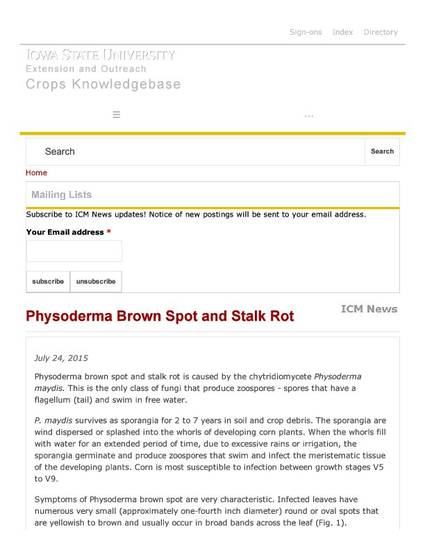
Article
Physoderma Brown Spot and Stalk Rot
Integrated Crop Management News
Document Type
Article
Publication Date
7-24-2015
Disciplines
Abstract
Physoderma brown spot and stalk rot is caused by the chytridiomycete Physoderma maydis. This is the only class of fungi that produce zoospores - spores that have a flagellum (tail) and swim in free water. P. maydis survives as sporangia for 2 to 7 years in soil and crop debris. The sporangia are wind dispersed or splashed into the whorls of developing corn plants. When the whorls fill with water for an extended period of time, due to excessive rains or irrigation, the sporangia germinate and produce zoospores that swim and infect the meristematic tissue of the developing plants. Corn is most susceptible to infection between growth stages V5 to V9.
Copyright Owner
Iowa State University
Copyright Date
2015
Language
en
File Format
application/pdf
Citation Information
Alison E. Robertson. "Physoderma Brown Spot and Stalk Rot" (2015) Available at: http://works.bepress.com/alison-robertson/143/
